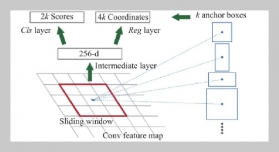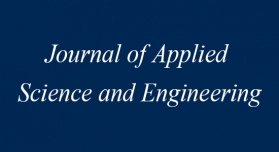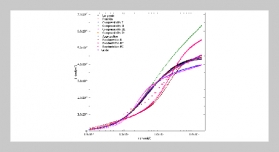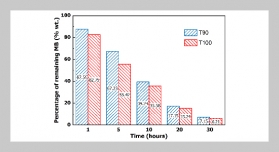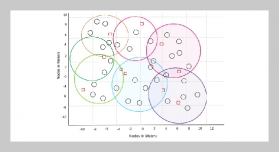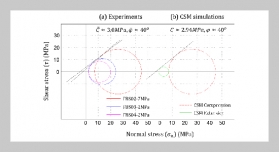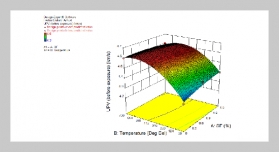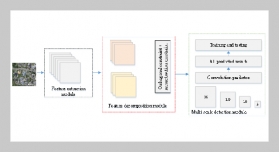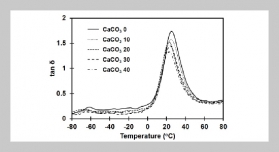REFERENCES
- [1] Ghavami, M., “Wideband Smart Antenna Theory Using Rectangular Array Structures,” IEEE Trans. Signal Processing, Vol. 50, pp. 2143�2151 (2002).
- [2] Tarokh, V., Seshadri, N. and Calderbank, A. R., “Space-Time Codes for High Data Rate Wireless Communications: Performance Criterion and Code Construction,” IEEE Trans. Inform. Theory, Vol. 44, pp. 744�745 (1998).
- [3] Liao, S. H., Ho, M. H. and Chiu, C. C., “Bit Error Rate Reduction for Multiusers by Smart UWB Antenna Array,” Progress In Electromagnetic Research C, Vol. 15. PIER C 16, pp. 85�98 (2010).
- [4] Chen, C. H. and Chiu, C. C., “Novel Optimum Radiation Pattern by Genetic Algorithms in Indoor Wireless Local Loop,” IST Mobile Summit 2000, Galway, Ireland, pp. 391�399 (2000).
- [5] Peng, M. and Wang, W., “Comparison of Capacity between Adaptive Tracking and Switched Beam Smart Antenna Techniques in TDD-CDMA Systems,” Microwave, Antenna, Propagation and EMC Technologies for Wireless Communications, Vol. 1, pp. 135� 139 (2005).
- [6] Ares, F. J., Rodriguez, A., Villanueva, E. and Rengarajan, S. R., “Genetic Algorithms in the Design and Optimization of Antenna Array Patterns,” IEEE Trans. Antennas and Propagat., Vol. 47, pp. 506�510 (1999).
- [7] Jiao, Y. C., Wei, W. Y., Huang, L. W. and Wu, H. S., “A New Low-Side-Lobe Pattern Synthesis Technique for Conformal Arrays,” IEEE Trans. Antenna Propag., Vol. 41, pp. 824�831 (1993).
- [8] Chen, C. H., Chiu, C. C. and Liu, C. L., “Novel Radiation Pattern by Genetic Algorithms, in Wireless Communication,” IEEE Semiannual Vehicular Technology Conference, Vol. 1, pp. 8�12 (2001).
- [9] Puskely, J. and Novacek, Z., “New Look to Real Valued Genetic Algorithm used to Reconstruct Radiation Patterns,” Radioelektronika ‘09. 19th International Conference 22-23, pp. 299�302 (2009).
- [10] Chen, C. H., Liao, S. H., Ho, M. H., Chiu, C. C. and Chen, K. C., “A Novel Indoor UWB Antenna Array Design by GA,” International Conference on Future Computer and Communication, Kuala Lumpur, Malaysia, pp. 291�295 (2009).
- [11] Guo, J. L. and Li, J. Y., “Pattern Synthesis of Conformal Array Antenna in the Presence of Platform Using Differential Evolution Algorithm,” IEEE Trans. Antenna Propag., Vol. 57, pp. 2615�2621 (2009).
- [12] Yonezawa, K., Maeyama, T., Iwai, H. and Harada, H., “Path Loss Measurement in 5 GHz Macro Cellular Systems and Consideration of Extending Existing Path Loss Prediction Methods,” Wireless Communications and Networking Conference, Vol. 1, pp. 21�25 (2004).
- [13] Tan, S. Y. and Tan, H. S., “A Theory for Propagation Path-Loss Characteristics in a City-Street Grid,” IEEE Transactions on Electromagnetic Compatibility, Vol. 37, pp. 333�342 (1995).
- [14] Tu, T. C. and Chiu, C. C., “Path Loss Reduction in an Urban Area by Genetic Algorithms,” Journal of Electromagnetic Waves and Applications, Vol. 20, pp. 319�330 (2006).
- [15] Clerc, M., “The Swarm and the Queen: Towards a Deterministic and Adaptive Particle Swarm Optimization,” Proceedings of Congress on Evolutionary Computation, Washington, DC, pp. 1951�1957 (1999).
- [16] Liao, S. H., Ho, M. H., Chiu, C. C. and Lin, C. H., “Optimal Relay Antenna Location in Indoor Environment Using Particle Swarm Optimizer and Genetic Algorithm,” Wireless Personal Communications, Vol. 62, pp. 599�615 (2012).
- [17] Ho, M. H., Liao, S. H. and Chiu, C. C., “A Novel Smart UWB Antenna Array Design by PSO,” Progress In Electromagnetic Research C, Vol. 15. PIER C 15, pp. 103�115 (2010).
- [18] Corazza, G. E., Degli-Esposti, V., Frullone, M. and Riva, G., “A Characterization of Indoor Space and Frequency Diversity by Ray-Tracing Modeling,” IEEE Journal on Selected Area in Communication, Vol. 14, pp. 411�419 (1996).
- [19] Zhijun, Z., Yun, Z. and Iskander, M. F., “New Computationally Efficient 2.5D and 3D Ray Tracing Algorithms for Modeling Propagation Environments,” IEEE Antennas and Propagation Society International Symposium, Vol. 1, pp. 460�463 (2001).
- [20] Tobin, M. L. and Richie, J. E., “A 2-D Ray Tracing Model for the Characterization of Spatial and TimeDomain Properties of the Indoor Propagation Channel,” IEEE Antennas and Propagation Society International Symposium, Vol. 4, pp. 1948�1951 (1995).
- [21] Kim, S. C., Guarino, B. J., Jr., Willis, T. M., III, Erceg, V., Fortune, S. J., Valenzuela, R. A., Thomas, L. W., Ling, J. and Moore, J. D., “Radio Propagation Measurements and Prediction Using Three-Dimensional Ray Tracing in Urban Environments at 908 MHz and 1.9 GHz,” IEEE Transactions on Vehicular Technology, Vol. 48, pp. 931�946 (1999).
- [22] Dal Bello, J. C. R., Siqueira, G. L. and Bertoni, H. L., “Theoretical Analysis and Measurement Results of Vegetation Effects on Path Loss for Mobile Cellular Communication Systems,” IEEE Transactions on Vehicular Technology, Vol. 49, pp. 1285�1293 (2000).
- [23] Elliott, R. S., Antenna Theory and Design, PrenticeHall (1981).
- [24] Carlisle, A. and Dozier, G., “An Off-the-Shelf PSO,” Proceedings of the 2001 Workshop on Particle Swarm Optimization, pp. 1�6 (2001).
- [25] Chiu, C. C., Kao, Y. T., Liao, S. H. and Huang, Y. F., “UWB Communication Characteristics for Different Materials and Shapes of the Stairs,” Journal of Communications, Vol. 6, pp. 628�632 (2011).
- [26] Liao, S. H., Chen, H. P., Chiu, C. C. and Liu, C. L. “Channel Capacities of Indoor MIMO-UWB Transmission for Different Material Partitions,” Tamkang Journal of Science and Engineering, Vol. 14, pp. 49� 63 (2011).
- [27] Liao, S. H., Chiu, C. C., Ho, M. H. and Liu, C. L., “Channel Capacity of Multiple-Input Multiple-Output Ultra Wide Band Systems with Single Co-Channel Interference,” International Journal of Communication Systems, Vol. 23, pp. 1600�1612 (2010).
- [28] Ho, M. H., Liao, S. H. and Chiu, C. C., “UWB Communication Characteristics for Different Distribution of People and Various Materials of Walls,” Tamkang Journal of Science and Engineering, Vol. 13, pp. 315� 326 (2010).
- [29] Liu, C. L., Ho, M. H., Chiu, C. C. and Cheng, C. Y., “A Comparison of UWB Communication Characteristics for Various Corridors,” ACTA International Journal of Modelling and Simulation, Vol. 30, pp. 172�177 (2010).
- [30] Liu, C. L., Chiu, C. C., Liao, S. H. and Chen, Y. S., “Impact of Metallic Furniture on UWB Channel Statistical Characteristics,” Tamkang Journal of Science and Engineering, Vol. 12, pp. 271�278 (2009).
- [31] Huang, T. and Mohan, A. S., “A Hybrid Boundary Condition for Robust Particle Swarm. Optimization,” IEEE Antennas and Wireless Propagation Letters, Vol. 4, pp. 112�117 (2005).
- [32] Jan, S. C. and Jeng, S. K., “A Novel Propagation Modeling for Microcellular Communications in Urban Environments,” IEEE Transactions on Vehicular Technology, Vol. 46, pp. 1021�1026 (1997).

